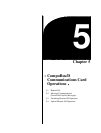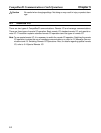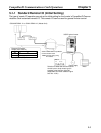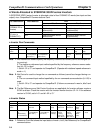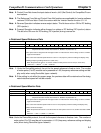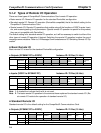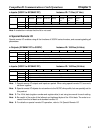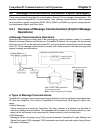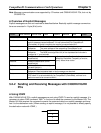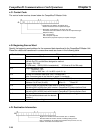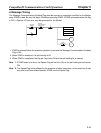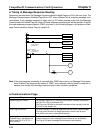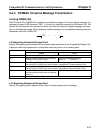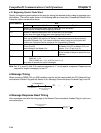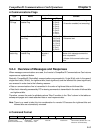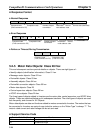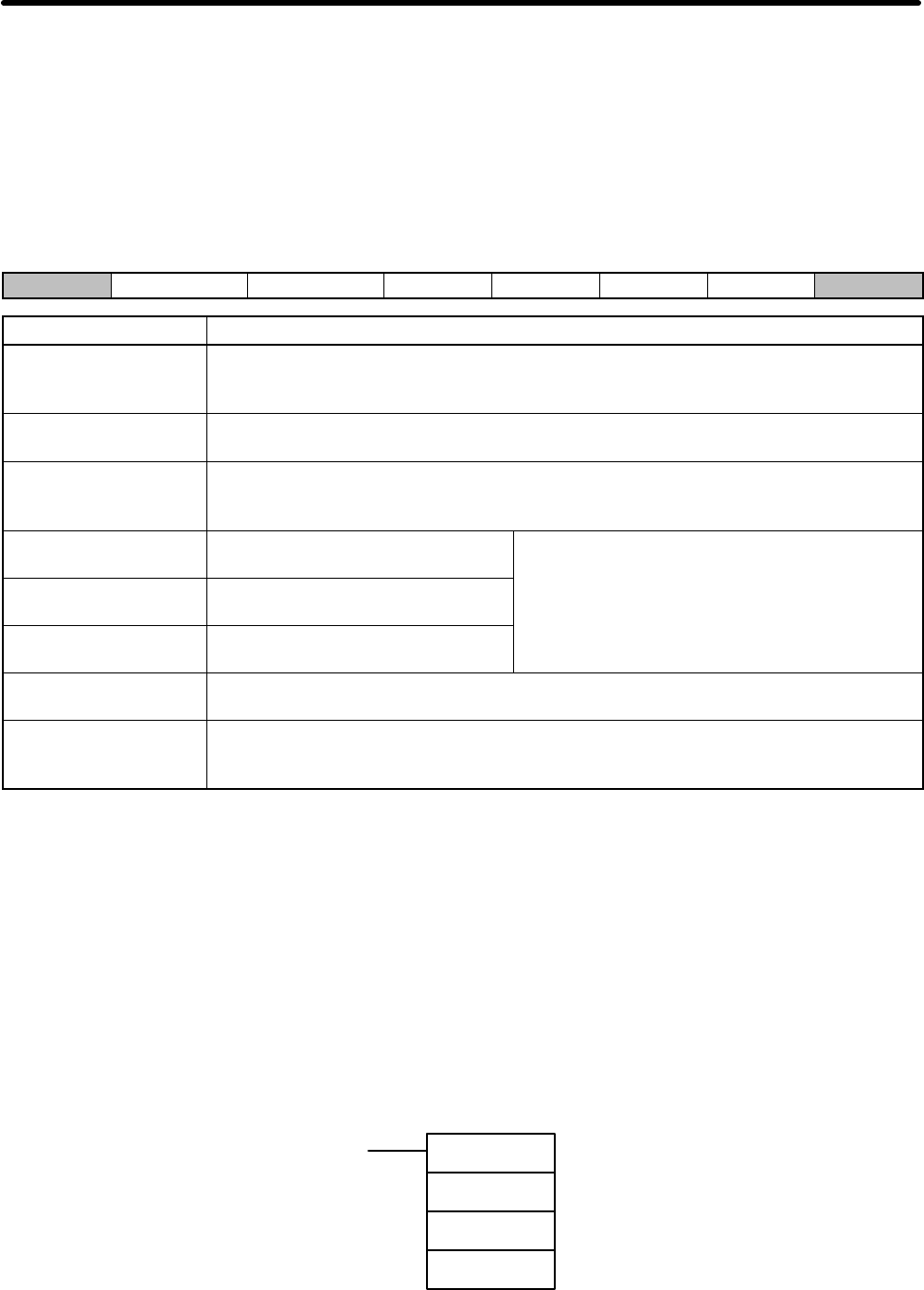
5-9
Note Message communications are supported by CV-series and C200HX/HG/HE PCs, but not by
C200HS PCs.
H Overview of Explicit Messages
Explicit messages are sent and received as described below. Basically explicit message communica-
tions are executed in 1-byte (8-bit) units.
Header Node address Service code Class Instance Attribute Data Footer
Item Content
Header The header indicates the beginning of an explicit message and that the frame is an
explicit message request/response. It is set automatically for CompoBus/D
(DeviceNet), so there is no particular need to be concerned with it.
Node address Request: Set the node address of the Slave/Master to be requested.
Response: The node address of the responding Slave/Master is set.
Service code Request: Set the code of the requested service (read/write, etc.).
Response: The MSB (most significant bit) of the requested service code is
changed to “1” and returned.
Class Function classification (major
classification)
Indicates the classification of a function
defined by DeviceNet. To specify a function,
Instance Instance classification (minor
classification)
specify these three codes.
Attribute Attribute (Set values are assigned
for each function.)
Data Request: Set the data to be written.
Response: Read-requested data or fault message are attached.
Footer This is the part that indicates the end of the explicit message and executes the
CRC check. It is set automatically for CompoBus/D (DeviceNet), so there is no
particular need to be concerned with it.
5-2-2 Sending and Receiving Messages with C200HX/HG/HE
PCs
H Using IOWR
With C200HX/HG/HE PCs, explicit messages are sent using IOWR. To send an explicit message, it is
necessary to place FINS command “2801” in front and to send the command to the Master Unit. The
Master Unit that receives the command converts the command data to an explicit message and trans-
fers it to the destination node. (When sending an explicit message, it is not possible to directly specify
the destination node with IOWR.)
(@)IOWR
C
S
D
CompoBus/D Communications Card Operations Chapter 5



